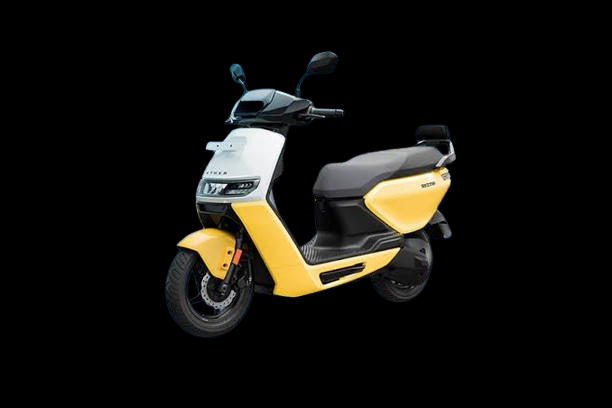Ola Electric vs Ather vs TVS iQube
Electric scooters in India are no longer a futuristic idea; they are a mainstream reality in 2025. With rising fuel prices, improved infrastructure, and smarter technology, EVs are rapidly replacing petrol scooters. The competition in the Indian electric two-wheeler market is intense, and leading the charge are Ola S1 Pro, Ather 450X Gen 3, and TVS iQube. This comparison looks at every aspect from power to pricing to help you decide which electric scooter suits your needs best.
Performance & Speed
In terms of performance, Ola S1 Pro stands out with its 8.5 kW motor and impressive torque of 58 Nm. It reaches 0 to 40 km/h in under 3 seconds and hits a top speed of 116 km/h, making it the fastest among the three. Ather 450X Gen 3 delivers solid acceleration too, powered by a 6.2 kW motor and capable of reaching up to 90 km/h. TVS iQube, while slightly slower with a top speed of 78 km/h, focuses more on smooth city rides and ease of control rather than outright speed.
Battery Capacity & Range
Ola S1 Pro comes with a 4 kWh battery offering a claimed range of up to 181 km on a single charge, with real-world usage giving around 135 km. Ather 450X Gen 3 uses a 3.7 kWh battery and delivers between 111 to 150 km depending on riding mode. TVS iQube is slightly behind with its 3.1 kWh battery, delivering a practical range of about 123 km. All three scooters take approximately 4.5 to 6 hours for a full charge using standard home chargers.
Technology & Smart Features
Ola S1 Pro features a 7-inch touchscreen dashboard that includes navigation, Bluetooth music, reverse mode, voice assistance, and cruise control. It also supports over-the-air updates and has mood lighting features. Ather 450X Gen 3 also features a 7-inch touchscreen with Google Maps integration, smart UI, auto hold, tire pressure monitoring, and robust app connectivity. TVS iQube is simpler but still useful with features like Alexa integration, anti-theft alerts, USB charging, turn-by-turn navigation, and crash notifications.
Comfort & Ride Quality
The riding experience varies across the three. Ola S1 Pro is stable at higher speeds thanks to its 1,359 mm wheelbase and heavier build. It is comfortable for long-distance rides, though the weight can be a bit much for beginners. Ather 450X offers a more agile and sporty ride, thanks to its lighter body and well-tuned suspension. It’s ideal for quick city commutes. TVS iQube delivers the smoothest and most commuter-friendly ride. Its dual-shock rear suspension is well-suited for bumpy roads and daily travel.
Storage & Practicality
Ola S1 Pro leads in practicality with a massive 36-liter under-seat storage compartment, making it the only one that can easily fit a full-face helmet. TVS iQube follows with 30 liters, and Ather 450X comes last with just 22 liters of storage space. If storage is a big priority, Ola clearly has the advantage here.
Design & Build Quality
Ola S1 Pro offers a futuristic design with clean lines and multiple color choices. It looks bold and modern but may not appeal to everyone. Ather 450X has a sportier, sleeker look that is more suited for younger riders. Its design is minimal and purposeful. TVS iQube leans toward a traditional scooter design, which may appeal to family users and older riders. All three scooters are built well, with Ola and Ather showing slightly better material quality in premium variants.
Price & Value for Money
TVS iQube is the most budget-friendly option with a starting price of ₹99,000 for the standard variant, going up to ₹1.04 lakh for the S model. Ather 450X Gen 3 is priced between ₹1.17 lakh to ₹1.30 lakh depending on the battery and optional upgrades. Ola S1 Pro is the most expensive at ₹1.40 lakh for the 4 kWh variant. While Ola offers the most features and performance, TVS delivers strong value for money, and Ather offers the best balance between both ends.
Charging Network & After-Sales Support
Ather leads in public charging infrastructure with its fast-growing Ather Grid available in major cities and smaller towns. Ola is quickly catching up with its Hypercharger network but still lacks depth in rural areas. TVS iQube, while strong in dealership presence, relies more on home charging than public infrastructure. When it comes to after-sales service, all three brands have made improvements, but Ather continues to receive high ratings for customer support and service efficiency.
Software & Ecosystem
Ather is considered the leader in terms of software maturity. Its dashboard is smooth, bug-free, and frequently updated. Ola’s UI is flashy and loaded with features, but it has received some complaints over system lags and connectivity glitches. TVS is stable and user-friendly, but it lacks the advanced software and frequent updates seen in Ather and Ola.
Which One Should You Buy.
If performance, futuristic features, and long range are your top priorities, Ola S1 Pro makes a strong case despite its higher price. If you’re looking for a sporty ride with excellent software and decent features, Ather 450X Gen 3 offers a great middle ground. On the other hand, if your focus is comfort, affordability, and dependable city commuting, TVS iQube provides excellent value.
Know About Beast EV Tata Curvv EV 2025














